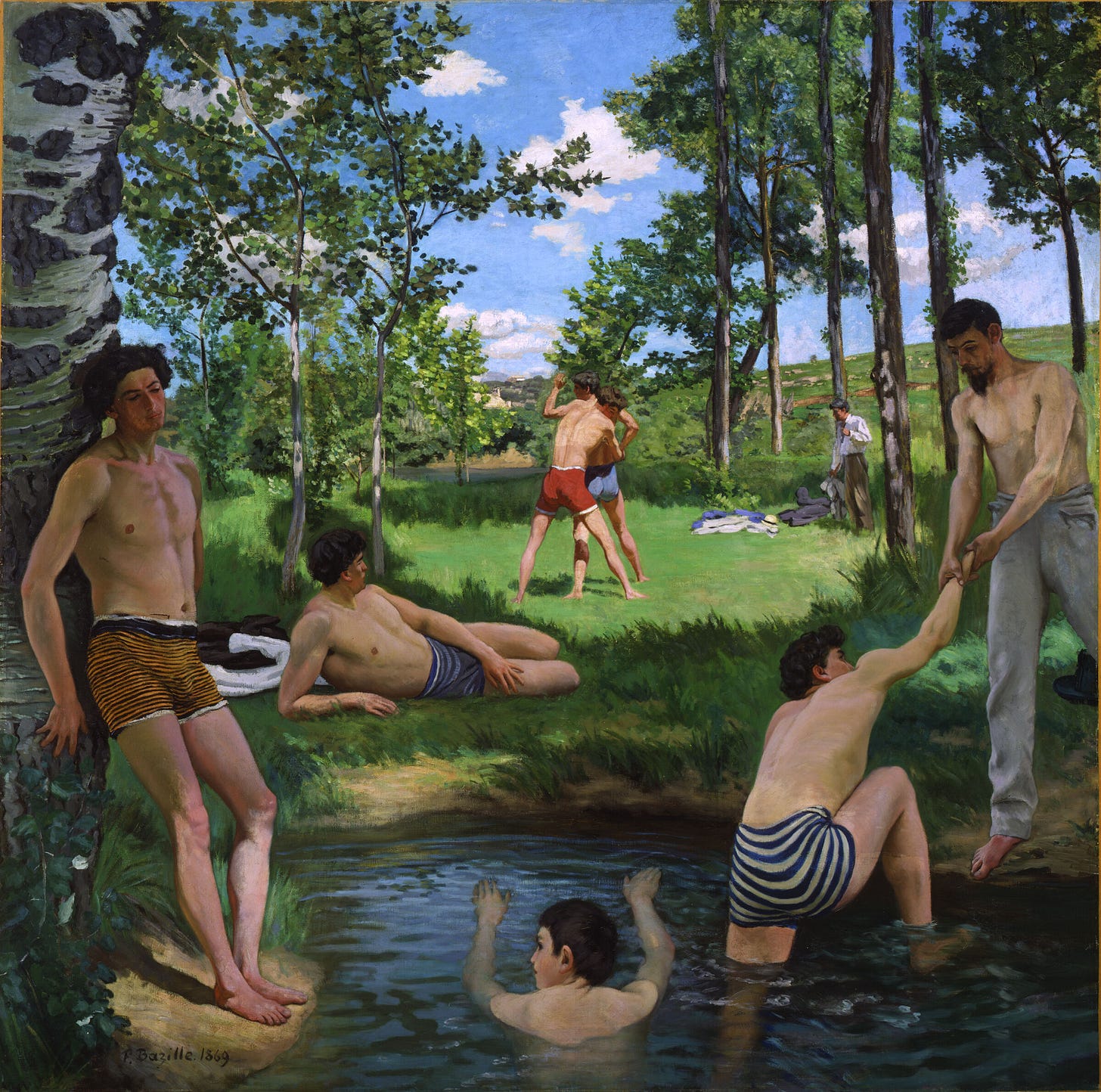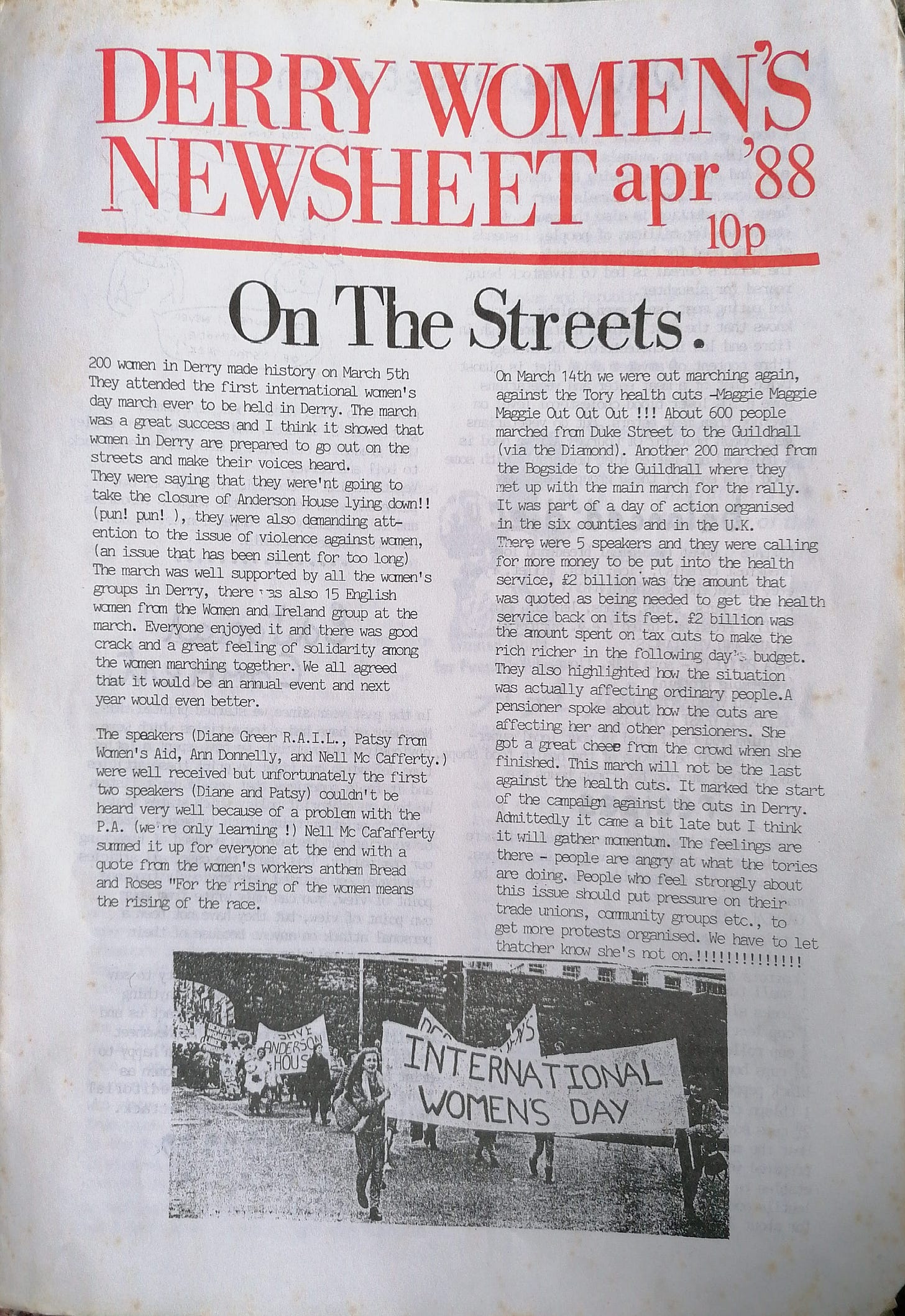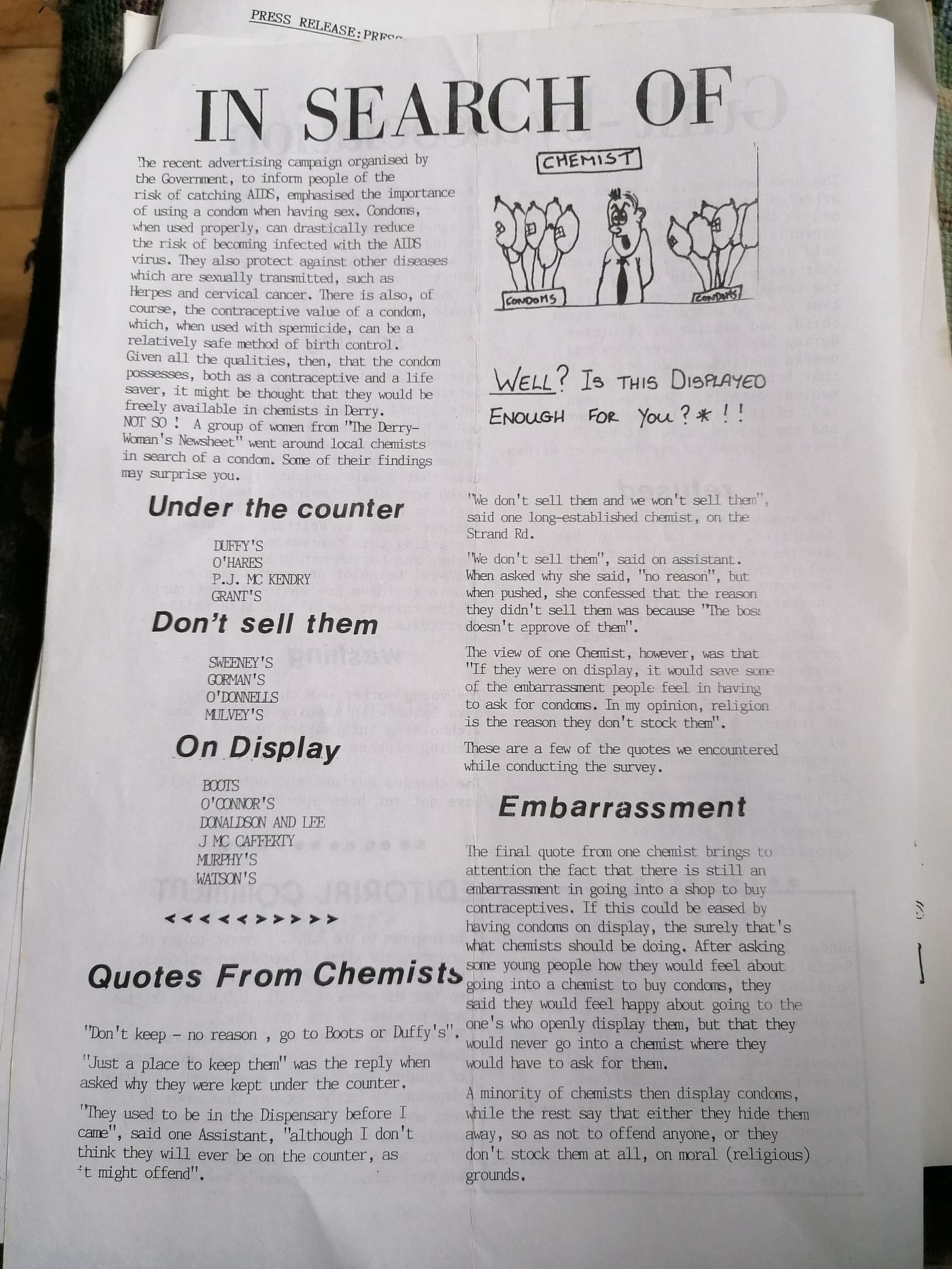"Women who just lived"
Reflecting on newsletters and diaries of the women of the north, including The Derry Women's Newsletter
The loss of the British Library’s Spare Rib collection due to Brexit-related copyright issues (orphan materials protected by EU directives are no longer a legal exception in the UK) and the 2023 hacking of the library, shows how materials archived online can be fragile and at-risk - even with the very best technical infrastructure.1
The loss of any materials from digital or physical archives is truly awful. But, I would posit that the loss of materials related to Spare Rib is more devastating than, say, the online disappearance of British men’s writing, parliamentary histories, and religious texts that are also housed in the British Library - and are doubtlessly backed up and documented by scholars.
It’s much more likely that World War Two related materials or Christian texts have already been well documented, have been preserved digitally and will be seen again; than time, funding and supports being available to once again preserve materials like second-wave feminist classifieds from a niche magazine.
Why? White cis-het Christian men’s histories, art, expressions, diaries, etc essentially make up all of the collections in major physical and digital archives and museums. The histories and activisms (particularly activisms that involve civil disobedience or counter-cultural activities) of marginalised groups and the global majority are either still waiting for the invitation from curators into institutional repositories, or are starting their own.
I recently attended an online talk by exhibit designer Margaret Middleton who explores ideas of queer possibility2 in the museum. Middleton writes beautifully of how we can exhume or see anew queer lives and experiences using a praxis of possibility and imagination in our critical gaze. Take for example, what Middleton terms, the “super gay” attributes of Bazille’s Summer Scene (Bathers).
Even within a museum sector so deluged with patriarchal, white-supremacist and Eurocentric attitudes, images, words and beliefs; if we feel the ~vibes~ of this Bazille painting, we may sense the presence of marginalised communities even in work that on the surface seems to tick all the hegemonic boxes :)
Women’s activisms and lives
We’ve seen recent exhibitions in the north of Ireland attempting to shed light on the lived experiences of (white) women - with the extraORDINARYwomen digital resource profiling in particular women’s political lives; and Queen’s University Belfast / Ulster University’s Bad Bridget highlighting the lives of sexually deviant Irish women between 1838-1918. The Tower Museum’s Peace Heroines physical exhibition offered an important platforming of the lives of many women working in electoral politics in the north, as well as some involved in NGO work, with a few grassroots organisers also recognised for their contributions.
Catherine Bishop put it well when she said, “history is less about what happened than about the questions we ask”.3 For my own part, my archival interests lie in recognising and preserving the activisms and the lives of people - from the north of Ireland in particular - who weren’t involved in electoral politics, who weren’t given the title of “heroine”. I’m interested in women who through their work in the background and in the grassroots, changed our communities and the region for the better. But I’m also interested in those women who just lived. Those whose day-in, day-out lives were in my view the ultimate f- you to the conflict in Northern Ireland. Those women who had the audacity to be good to their neighbours, to endure, to have interests and experience joy in their lives - despite the fear and silence of those extremely dark and violent times.
Seeking out these histories require asking different questions about a). what constitutes our histories? and b). how does this change our archiving practices?
Bronagh McAtasney’s “Diary of a Northern Irish Girl” provides such a brilliant example of the kinds of materials and histories I’m passionately interested in. Writing in the early 1980s, Bronagh logs the music charts of the era, the gossip of her life and the weather. It’s only when a line like this occurs do you understand the backdrop against which Bronagh is writing:
Me & John went to 11 Mass. I got the Sunday Times with the special colour supplement on the Royal Wedding... Ciaran Doherty (RIP) died tonight @ 7.15. There were binlids in Newry. Me, John & Mummy heard them... That's all.
If you close your eyes you can almost imagine the sounds of binlids being banged off pavements, as communities mourned and raged at the violence of the British State, where young men starved themselves to death for political prisoner status to no mercy or compassion.
Bronagh’s diary depicts life amongst that most cruel of death, in a dark decade with no hope on the horizon.
Derry Women’s Newsheet
Picture the scene. It’s Derry in 1988. You and a friend are standing outside Woolworths in the rain, holding copes of the Derry Women’s Newsheet. You’ve spent the last month helping write it, reaching out to women from across the sectarian divide, populating it with stories. You sell it for 10p.
I stumbled upon the existence of the Derry Women’s Newsheet back in 2020 when I was interviewing some pro-abortion activists about how they got involved in activism, what it was like to live in the north-west of Ireland and be pro-abortion, as well as their other interests and activisms. So many of the women I spoke to mentioned the Derry Women’s Newsheet. And thanks to the wonderful Anne McLean, I managed to get my hands on some copies that she had held onto.
Like Diary of a Norn Irish Girl, these newsletters tell us that many entrenched beliefs about Northern Ireland are outright false. For example, the claim that the region is wholly divided across sectarian lines - especially during the Troubles years - is fundamentally challenged when we look at these cross-community, feminist materials. Adding to the weight of work done by academics such as Eileen Evason, the Derry Women’s Newsheet shows that women were socialising together, they were going on trips to Dublin and writing pieces about child-rearing together; they were boycotting South African items and even drawing cartoons together to adorn the newsheet.
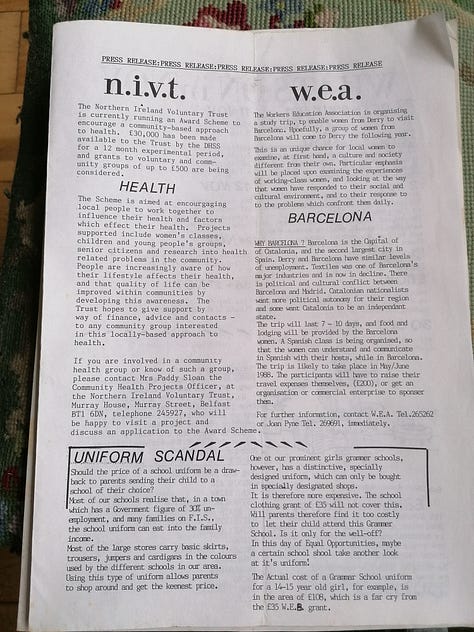
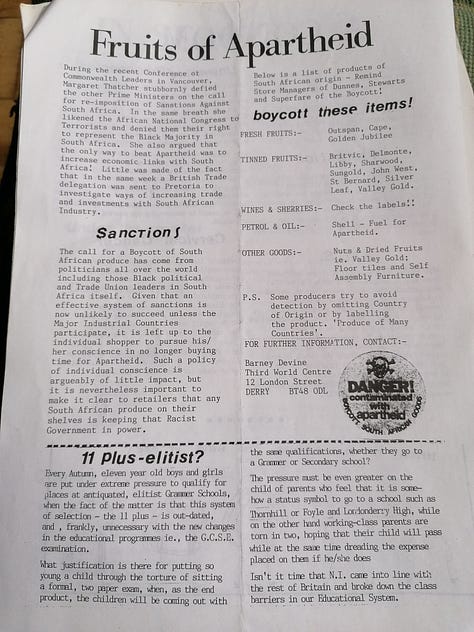
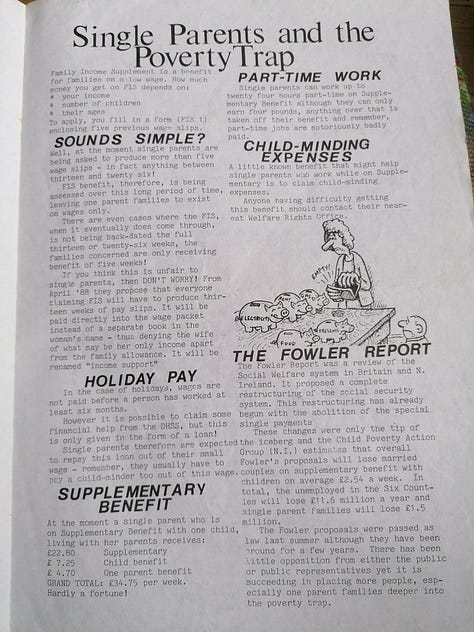

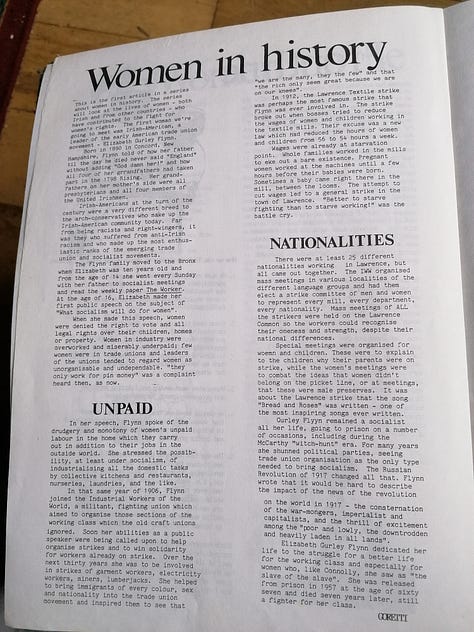

Some of my favourite content in the Newsheet is the investigative journalism that went on in relation to access and attitudes to contraception at this time.
I will again ask you to picture the scene - it’s Derry. It’s the late 1980s. You and your troupe of friends are going around all of the pharmacies in the city - trying to buy condoms. You report back, naming and shaming those local businesses who sell, don’t sell or hide these materials. I’M SCREAMING!!!
There is so much more work to be done on profiling the Derry Women’s Newsheet, as well as finding and preserving other ephemeral and at-risk materials - and having them included in institutional repositories and archives.
These newsletters and diaries of women are just the tip of the iceberg in terms of content, identities and histories that we are losing. If access to Spare Rib can be lost due to changing regulations and hacking, what chance do smaller (but full as much heart!) publications have?
In a Northern Irish context, I firmly believe we owe it to our foremothers to assertively save materials relating to our liberation. To show that resistance to violence and alternative ways of thinking were and are present in the region.
In as much as the punk scene of the north is heralded as an escape from sectarian violence and brutality, so too should the feminist movement be seen as a space where women stood together and envisioned the dream of a better world - and had great craic when doing it.
Digital Preservation Coalition (2023). The Global 'Bit List' of Endangered Digital Species https://www.dpconline.org/digipres/champion-digital-preservation/bit-list
Middleton, M. (2020). Queer Possibility. Journal of Museum Education, 45(4), 426–436. https://doi.org/10.1080/10598650.2020.1831218
Bishop, C. (2016). The Serendipity of Connectivity: piecing together women’s lives in the digital archive. Women’s History Review, 26(5), 766–780. https://doi.org/10.1080/09612025.2016.1166883





